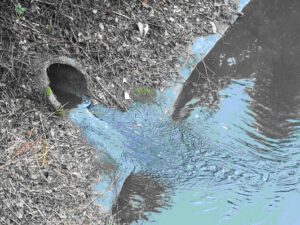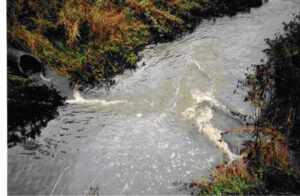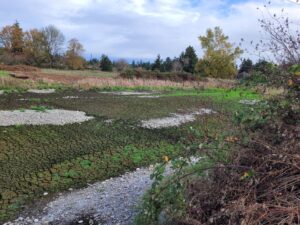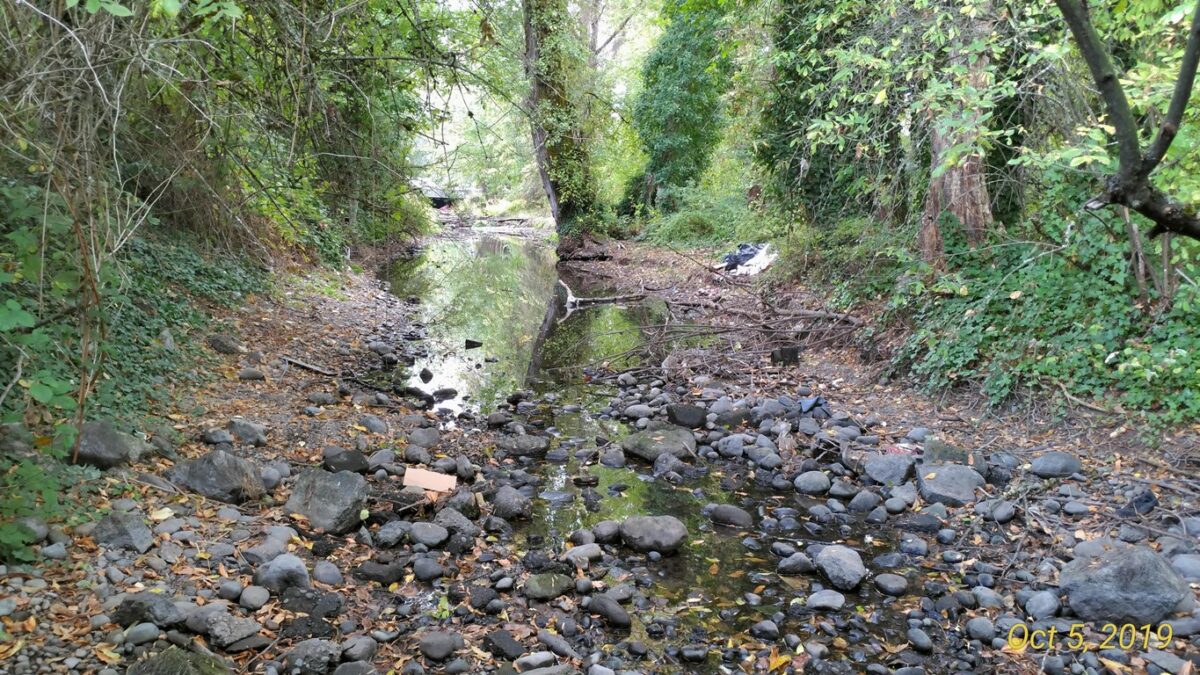Report on Drinking Water in Pierce County – in January 2024
This report used to pass the Pierce County’s Budget Proviso
Ordinance No. 2023-65s2
Editor’s note: This interim report and our proposal for county budget in 2025 will be updated in our February 2025 newsletter. The problems outlined in this interim report remain.
No one is monitoring the use of drinking water or evaluating trends as urbanization increases in Pierce County. Water is getting more polluted, well levels appear to be declining, and Clover Creek no longer flows in the winter. Pierce County is beginning to recognize these problems.
To begin to address drinking water issues, in Nov 2023, the Pierce County Council passed Ordinance No. 2023-65s2 as part of the 2024-2025 budget.
Section 21 of this ordinance directs the Planning and Public Works Department to:
- present a business case analysis for the expansion of the Pierce County Water Utility,
- consolidate existing water systems (only the small ones),
- establish reclaimed water services,
- make recommendations for the development of a countywide inventory of known water resources, and
- include a 20-year projection of water availability and usage with a map.
- report to the Council no later than 1 June 2024.
Over the years, members of Clover Creek Council and Tahoma Audubon Society have met with County Council members and shared our concerns about the long term sustainability of water quality and quantity. We are pleased with the initiative taken by the county council to examine the health of the watershed and what can be done to insure that the water purveyors and the county residents do not run out of water in the next 10 years.
Already Spanaway Water Company and three other water companies are buying water from Lakewood Water District. As more water approval letters are issued to accommodate growth in Frederickson and Spanaway, it is time to look at changes in the watershed that can increase aquifer levels and return stream flows to previous levels.
Interim Report on Drinking Water Issues in Pierce County’s Watersheds:
This interim report discusses the various issues that we are aware of regarding drinking water; quality, quantity and management for future generations. This report focuses on the Chambers-Clover Watershed (WRIA 12 – Water Resource Inventory Area)
The Problem:
Pierce County residents get almost all drinking water from what is called a ‘sole source aquifer’, which means from the ground. Practically all water that is in the aquifer comes from rain.
Most drinking water is pumped from the ground from wells at various depths by the 13 large water companies in the watershed. Water is also pumped by small citizen owned entities (less than 15 hookups) and by private wells. Recently, two companies started extracting water and selling it.
After water is used for homes and businesses about 90% is routed to the Pierce County sewer system where it is processed and released to Puget Sound at Chambers Bay. The remaining water is routed into septic systems or is used for irrigation both of which return the water to the ground.
Important Reports:
In 1996, the Tacoma-Pierce County Health Department was tasked with implementing the Long-Term Groundwater Monitoring Program as described in the Pierce County Coordinated Water System Plan. The goal was to collect water level, production data, and water quality data on a regular basis from representative wells (146) in four water basins and share the data with program participants.
Decline in Aquifer Water Level:
The 2005 report found a number of wells within the monitoring program appeared to show a declining water level. A following report in 2007 reported 34 wells out of 113 monitored appeared to show a declining water level. In the Chambers-Clover Creek Watershed, 20 out of 48 wells showed some indication of declining water levels. This report also provided a map showing wells with elevated levels of nitrate, chloride or arsenic. This monitoring and reporting program was terminated in 2007.
In 1998, the State Legislature established the Washington State Watershed Management Act to address diminishing water availability and quality and the loss of critical habitat for fish and wildlife (RCW 90.82). In 2003 a group of Initiating Governments formed a Planning Unit which developed a comprehensive water plan under the Act and published a report on 21 Sep 2024. The Puyallup Tribe could not approve the plan for submittal to the Pierce County Council so the planning process was terminated.
Development of Numerical Groundwater-Flow Model:
Some members of the Planning Unit concluded that additional data, including development of a numerical groundwater-flow model, would contribute to an improved understanding of water resources in the Chambers-Clover Creek Watershed. In May 2006 the U.S. Geological Survey begin a project to develop a model to simulate groundwater flow. The model could be used to assess the impacts of groundwater withdrawals on groundwater levels and on streamflows during low-flow conditions. The report was published in 2011 (Scientific Investigations Report 2011-5086.
The USGS recently refined their model by adding data from 2014 and 2015 and made other changes which will:
1) increase model usefulness in simulating “local scale” water resource issues;
2) improve simulation of streamflows and aquifer-stream interactions; and
3) minimize differences between reported and simulated spring discharge.
The refinements and results from the CCCW numerical model is included in a report released in January.
Surface water on 112th Street flows into Clover Creek containing oil and gas from cars and 6ppd chemical from tires. These drains need filtering to increase water quality in the creek to be used to create a sustainable water source in the watershed.
________________________________________________________________
Restart the Long-Term Groundwater Monitoring (drinking water) Program.
Discussions need to be held to determine the cost to fund the Tacoma-Pierce County Health Department to implement this program. The TPCHD is the appropriate entity to provide this independent analysis and reporting.

Recharging the drinking water (groundwater) with clean water: A higher priority needs to be assigned to cleaning rainwater that runs off high traffic roads and parking lots. We now know that a chemical added to tires increases their life is deadly to Coho and Steelhead Salmon and is carried by rain off the roads directly to wetlands or streams. Aquatic critters may also die. County staff said an initial inventory found over 400 such drains.
Current taxes available to pay for clean drains: About $12 million is collected from property owners in the Chambers-Clover Creek Watershed for stormwater fees (about $150 per parcel). Only about 2 % of this fee is spent in the watershed annually to improve water quality and flooding issues.
The method used by the County stormwater staff is biased toward selecting projects which address flooding issues along the Puyallup River. Projects designed to clean polluted rainwater before it is released to recharge drinking water through wetlands and streams have a low priority for funding.
New source to capture rain and storing drinking water: Scientists predict our watershed will receive up to 50 inches of rain in the winter and much less in the summers. Current rainfall will increase from 35 inches adding a potential 15 inches to increase the water level in aquifers. This presents an opportunity to capture the excess winter rains and hold the water so it can recharge the drinking water in the ground. County staff could identify County owned properties along Clover Creek and evaluate the costs for beneficial projects.
A prime source of water to recharge aquifer is to remove asphalt removal from the bottom of the creek in Parkland. Several Parkland Aquifers can be recharged in the vicinity of this creek.
_________________________________________________________________

New water resources in vicinity of increased need: The Pierce County Sewer system removes water from the watershed 7 days a week 24 hours a day. This water is never returned to the watershed for reuse. Long-term plans need to be evaluated to build a “scalping” plant in the upper watershed perhaps near Frederickson.
These plants intercept water from the sewer flow and treat it to a high level of purity. The water is available for reuse or return to the ground to replenish drinking water. LOTT in Lacey has operated a facility to create reusable water for many years.
Drinking water contaminated with PFAS chemical from McChord: McChord Field used a fire fighting foam for decades to practice putting out fires on aircraft. This chemical is considered dangerous to humans. In Dec 2000, a pipe broke in a hangar at McChord Field and gallons of this chemical flowed directly into Clover Creek. Evidence of the leak appeared in Lakewood as 15 foot high foam accumulated at fish ladders and falls. Less evident pollution of the Lakewood drinking water occurred as the dangerous chemical flowed through the ground out of sight.
Migration of PFAS and closing of wells: In a recent e-mail, the manager of Lakewood Water District reported they have 13 wells contaminated with PFAS. (See Appendix A) Four wells were shut down and water is being filtered from them. Three more wells are being designed for filters. Unfortunately, shutting down a well leaves the chemical in the drinking water and it will continue to migrate into the lower storage areas (aquifers) to replace and contaminate clean water that is withdrawn.
Funding to pay cost of filtering: Lakewood Water District reported they have a suit against the Department of Defense for close to $400 million for damages and to pay the cost of future filtering. In a recent interview with council member Jani Hitchen she said she visited a company in Tacoma that were researching methods to make PFAS safe.
Water companies are running low on drinking water or water rights. At least 4 water companies in Parkland, Spanaway and Frederickson do not have adequate supplies of drinking water to meet current and expected uses as more people and businesses populate the Urban Growth Area. As a result they are buying water from the Lakewood Water District.
The Spanaway Water District estimated by 2035
it will be short about 800 acre feet of drinking water.
Downstream water companies ability to meet future supply: In the short-term, moving water from Lakewood to meet demands by water companies upstream toward Frederickson is reasonable. However, these water companies will soon depend on this additional water. What would happen if Lakewood Water could not continue to meet these demands, say due to pollution or shortage of water?
Legislation increases demand for water: New legislation has added a new big demand for drinking water. This Legislative requirement allows Additional Dwelling Units on parcels with an existing residents. Potentially this could almost double the need for drinking water. More information is needed predict the impact of this law.
The main channel of Clover Creek, upstream from Pacific Avenue in Parkland, has not flowed in the winter for the last 3 years. Photo shows the channel of Clover Creek at 136th St in Parkland on 3 Jan 2024.
_________________________________________________________________

Loss of Stream Flow in Clover Creek. The 70 year average flow at a USGS gauge by Hwy 99 in Lakewood is 29,000 acre feet. The annual flow for 2019 at this gauge was a bit over 12,000 acre feet, a 58% reduction. The sewer system is removing about 22,000 acre feet and it is increasing.
A map prepared for the Hudson Bay Company in 1852 showed a winter river flowed from Parkland to Steilacoom Lake. Although rainfall has been very low over the last several years, we believe drinking water withdrawals by water companies are contributing to the loss of stream flow.
When the winter rains return, the rain must first replace the water that was withdrawn before there is any water to support a stream flow. The more water pumped out means the more rain will be needed just to replace the used water.
Why is this an interim report? More relevant data will be available soon from the revised and improved U.S Geologic Survey Model about groundwater flow in the Chambers-Clover Creek Watershed. The report requested by the County Council (see page 2) should also be prepared by 1 June 2024. We will include this new data in a follow on report in February of 2025.
This report was prepared using information from managers of water companies, personal observations, USGS gauge data, and discussions with County staff.
Special thanks to Jani Hitchen and Ryan Mello, County Council members for drawing attention to an issue that affects every citizen in Pierce County – Drinking Water.
Authors:
Kirk Kirkland was community coordinator for Audubon Society for 20 years before they changed their name. Al Schmauder is the President of the Clover Creek Council and past president of the Chamber-Clover Creek Watershed Council. Currently he volunteers as the Water Steward for the Chambers-Clover Watershed.


